
Dharma is often interpreted as “duty,” “religion” or “religious duty” and yet its definition is more profound, defying the concise English translation. The word ‘Dharma’ originates from the Sanskrit root “dhri,” which means “to sustain.” Another correlated meaning of ‘Dharma’ is ‘that which is indispensable and fundamental to something’. The word ‘Sanatan’ translates to ‘eternal’ and the phrase ‘Sanatan Dharma’ alludes to that which is eternally integral to a living entity. Likewise, ‘Sanatan Dharma’ commonly refrred to as ‘Hinduism’ today, is timeless, non-sectarian and not limited by any boundaries. Religion conveys the idea of faith, and the faith of a person may change. But ‘Sanatan Dharma’ is that which cannot be changed. That which is ‘Sanatan’ does not have either a beginning or an end. So that brings us to our questions – Who is the founder of Hinduism (Sanatan Dharma) ? What is the origin of Sanatan Dharma ?
Vedic scriptures and the Supreme Lord
The teachings of Sanatan Dharma are laid out in the holy Vedic scriptures. They are a huge collection of books, primarily composed in Sanskrit, that include material (mundane), religious (ritualistic) as well as spiritual (monotheistic) knowledge. The expression “Vedic” is derived from the Sanskrit word veda, which means knowledge or revelation. The Vedas are immense both in their size and scope. Its sheer volume easily surpasses any other religious scriptures of this world. Vedas even surpass the lengthy ancient works such as Homer’s epics and the sacred cannon of China. For instance, Mahabharata, one of the Vedic epics, has 110,000 four-line stanzas, making it the world’s largest poem – approximately eight times as lengthy as Iliad and Odyssey combined. Ramayana, another Vedic epic, consists of 24,000 couplets.
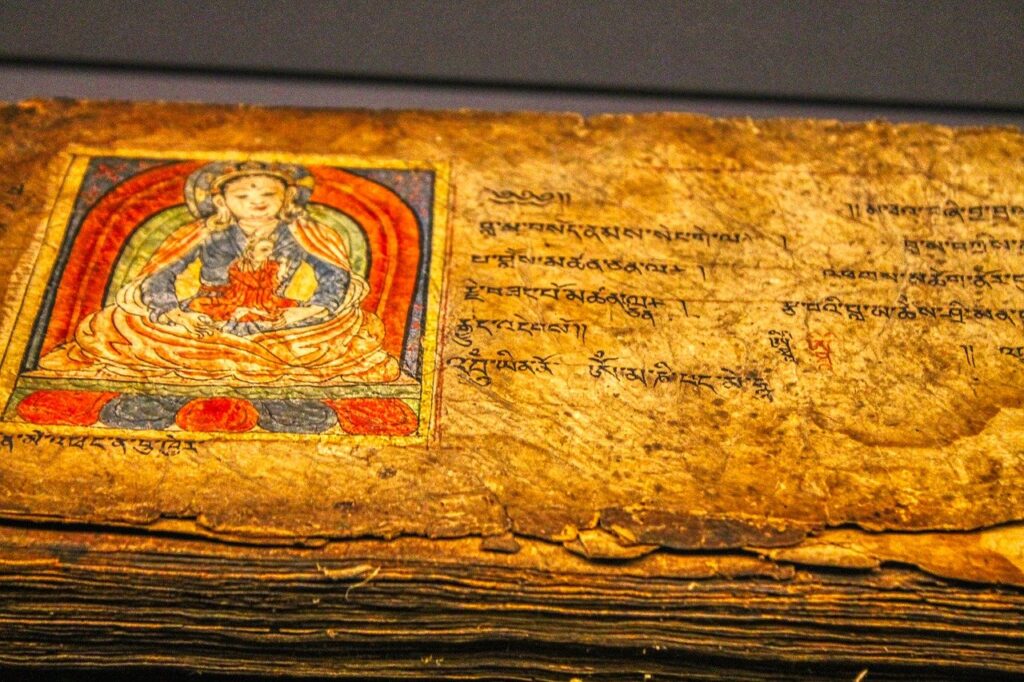
Vedic scriptures consist of the four Vedas, Upanishads, Tantric scriptures, Vedanta Sutras, Itihasas (history), Puranas, etc. The Vedic literatures not only deal with life as we understand it but it also deals with the knowledge of nature, universe, and a grand hierarchy of living beings – nonhumans, humans & humanoids. There is a large section of the Vedas that deal with detailed accounts of the non-material worlds beyond the fabric of time and space. For the earthly humans, however, the Vedas prescribe a balance between their spiritual and material lives. Of all the holy books comprising the Vedic scriptures, the sacred text of Bhagavad Gita is considered to contain its most essential revelations. In the Bhagavad Gita, we come across this following proclamation made by Lord Krishna –
sarvasya caham hrdi sannivisto
mattah smrtir jnanam apohanam ca
vedais ca sarvair aham eva vedyo
vedanta-krd veda-vid eva caham
(Bhagavad Gita 15.15)
–
I am seated in everyone’s heart, and from Me come remembrance, knowledge, and forgetfulness. By all the Vedas only am I to be known; I am indeed the compiler of Vedanta and the knower of the Vedas.
So Lord Krishna here affirms that He is the source of all the Vedic literatures and the sole purpose of studying these books is to understand Him. So one may here question as to who is Lord Krishna. Lord Krishna explains this Bhagavad Gita –
mattah parataram nanyat
kincid asti dhanan-jaya
mayi sarvam idam protam
sutre mani-gana iva
(Bhagavad Gita 7.7)
–
O conqueror of wealth (Arjuna), there is no truth higher than Me (Krishna). Everything rests upon Me, as pearls are strung on a thread.
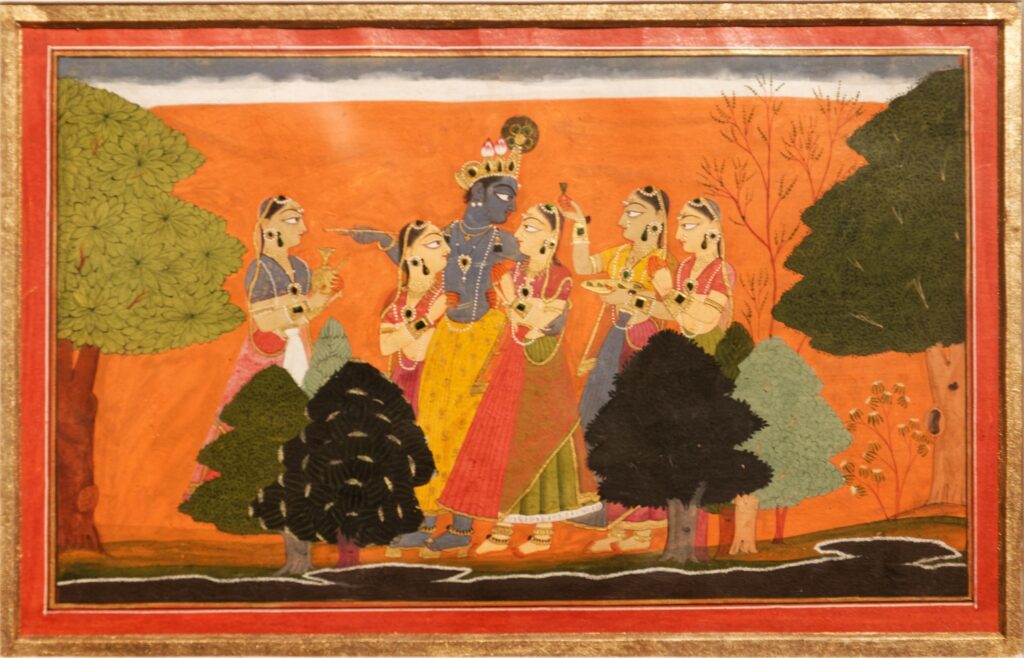
Hence the Bhagavad Gita identifies Lord Krishna to be the Supreme Truth and ultimate controller. In other words, Lord Krishna is God. The below verses from Bhagavad Gita further validates this.
aham sarvasya prabhavo
mattah sarvam pravartate
iti matva bhajante mam
budha bhava-samanvitah
(Bhagavad Gita 10.8)
–
I am the source of all the spiritual and material worlds. Everything originates from Me. The wise who perfectly know this engage in My devotional service and worship Me with all their hearts.yac capi sarva-bhutanam
bijam tad aham arjuna
na tad asti vina yat syan
maya bhutam caracaram
(Bhagavad Gita 10.39)
–
Furthermore, O Arjuna, I (Krishna) am the generating seed of all existences. There is no being – either moving or nonmoving – that can exist without Me.
Not only in the Bhagavad Gita but the Supreme position of Lord Krishna is established throughout the Vedic scriptures. For instance, Lord Brahma prays as follows –
isvarah paramah krishnah
sac-cid-ananda-vigraha
anadir adir govindaha
Sarva-karana-karanam
(Brahma Samhita, Chapter 5, Verse 1)
–
Krishna who is known as Govinda is the Supreme Personality of Godhead. He has an eternal blissful spiritual body. He is the origin of all. He has no other origin and He is the original cause of all causes.
Elsewhere, the Narayana Upanishad states “eko vai narayana asin na brahma na isano napo nagni-somau neme dyav-aprthivi na naksatrani na suryah” – In the beginning of the creation there was only the Supreme Personality Narayana (Krishna). There was no Brahma, no Shiva, no water, no fire, no moon, no heaven or earth, no stars in the sky and no sun.
The Varaha Purana states, ‘Narayanah paro devas tasmaj jatas caturmukhah tasmad rudro bhavad devah sa ca sarvajnatam gatah’ – Narayana (Krishna) is the Supreme Personality of Godhead. From Him Brahma was born, and from Brahma, Shiva was born.
Krishna – founder of Hinduism (Sanatan Dharma) :
The science of Sanatan Dharma was first spoken by Krishna, the Supreme Personality of Godhead. This is verified in the Atharva Veda which states –
“yo brahmanam vidadhati: purvam yo vai vedams ca gapayati sma krsnah” – It was Krishna who in the beginning had instructed Brahma in Vedic knowledge and who disseminated Vedic knowledge in the past.
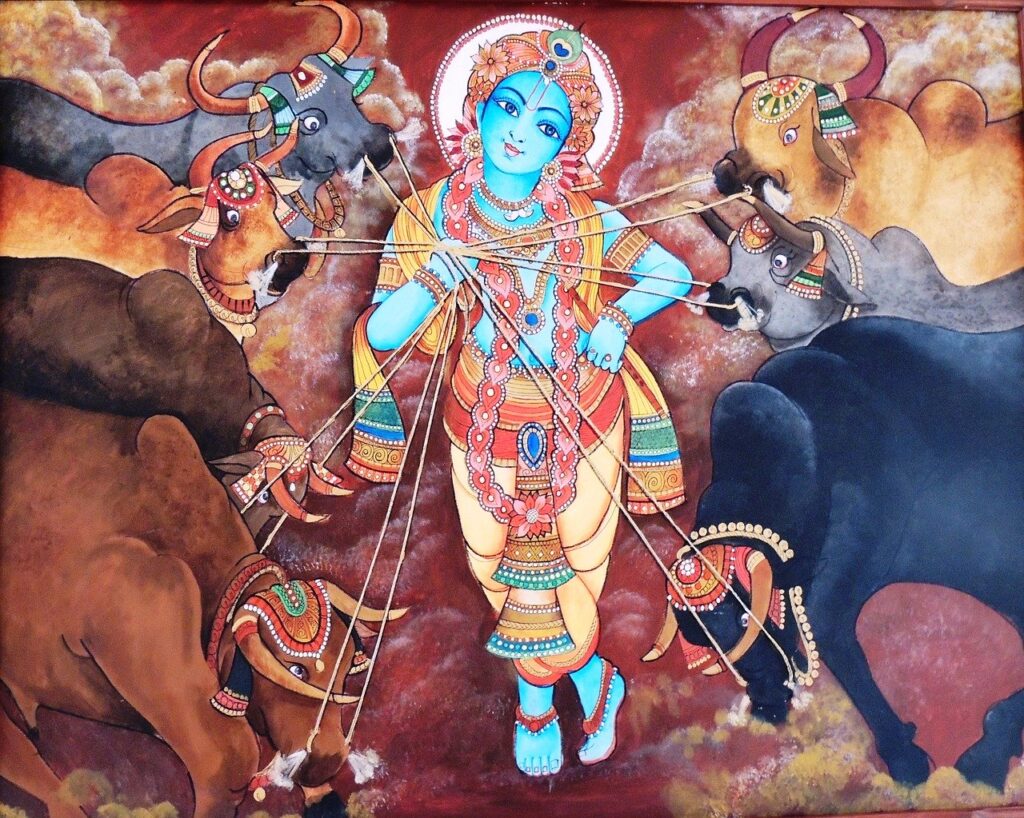
The Bhagavad Gita also confirms that Lord Krishna had instructed the Supreme Science of Sanatan Dharma millions of years ago to Vivasvan, the demigod of Sun. And He had to instruct the same to Arjuna, once again in the battlefield of Kurukshetra, as the science had become lost in due course of time. Hence Sanatan Dharma is not something recent or simply a few thousand years old as is sometimes popularly proposed. Neither is Sanatan Dharma, a product of artificial fabrication or mere speculation. It is a perfect science that has been originally taught by Krishna, the perfect person Himself. He is the primary source of this supreme science and its ultimate protector.
sri-bhagavan uvaca
imam vivasvate yogam
proktavan aham avyayam
vivasvan manave praha
manur iksvakave bravit
(Bhagavad Gita 4.1)
–
The Personality of Godhead, Lord Krishna, said – I had instructed this imperishable science of yoga to the sun-god, Vivasvan, and Vivasvan had instructed it to Manu (the father of mankind) and Manu, in turn, revealed it to Iksvaku.
The unadulterated Supreme science was passed down for generations through a chain of bonafide disciplic successions and the saintly kings and their subjects were in this way initiated into the sacred knowledge. The next verse confirms this –
evam parampara-praptam
imam rajarsayo viduh
(Bhagavad Gita 4.2)
–
This supreme science was thus received through the chain of disciplic succession, and the saintly kings acquired it in that way.
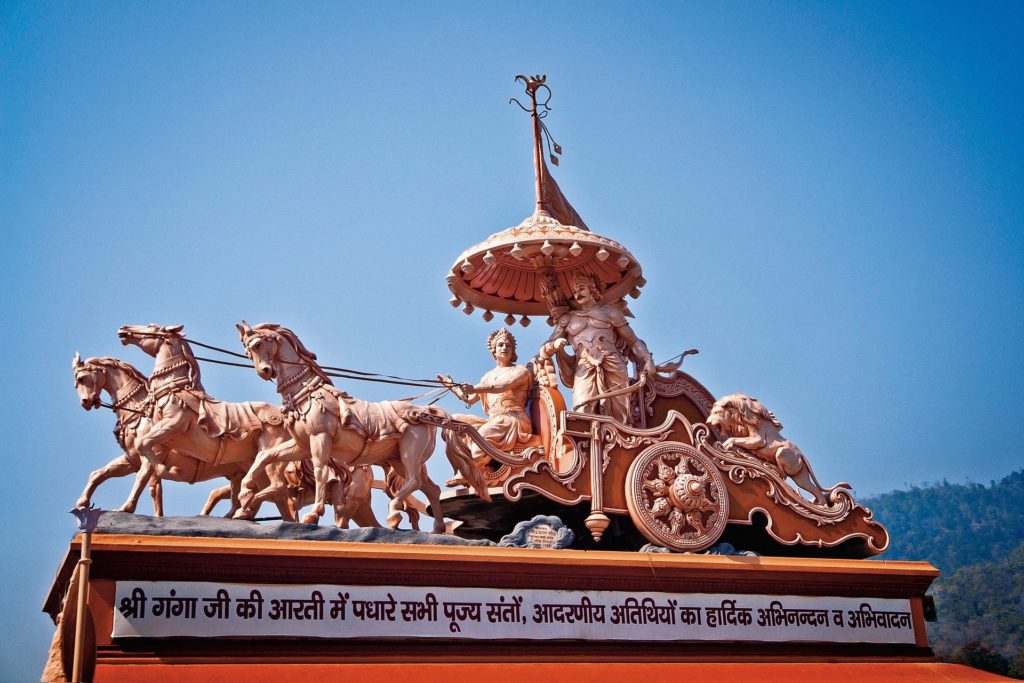
Hence, though the battle of Kurukshetra took place around 5000 years before, and the sacred verses of Bhagavad Gita were spoken on this battlefield, yet, the knowledge of Sanatan Dharma contained therein, dates way back to the beginning of creation itself. This same supreme knowledge has been spoken by Krishna or His emissaries again and again, whenever the knowledge had become lost or the chains of disciplic succession broke. In the previous days, this knowledge of Sanatan Dharma was transmitted through chains of bonafide disciplic succession. It was however finally penned down by Srila Dvaipayana Veda Vyasa around 5000 years back as the sage could perceive through his transcendental vision the deterioration of everything, including one’s memory, due to the advancing age of Kali.
The Brihadaranyaka Upanishad also confirms that the Supreme Lord is the origin of this science of Sanatan Dharma –
asya mahato bhutasya nisvasitam etad yad rg-vedo yajur-vedah samavedo ‘tharvangirasah
Brihadaranyaka Upanishad (4.5.11)
–
The four Vedas, namely the Rig Veda, Yajur Veda, Sama Veda, and Atharva Veda, manifest from the breathing of the Supreme Personality of Godhead.
Elsewhere, the following statement appears in the Gopala Tapani Upanishad –
Sac-cid-ananda-rupaya
Krishnayaklista-karine
namo vedanta-vedyaya
gurave buddhi-saksine
(Gopala Tapani Upanishad 1.1)
–
I offer my respectful obeisances unto Krishna, who has a transcendental form of bliss, eternity and knowledge. I offer my respect to Him, because understanding Him means understanding the Vedas and He is therefore the supreme spiritual master.
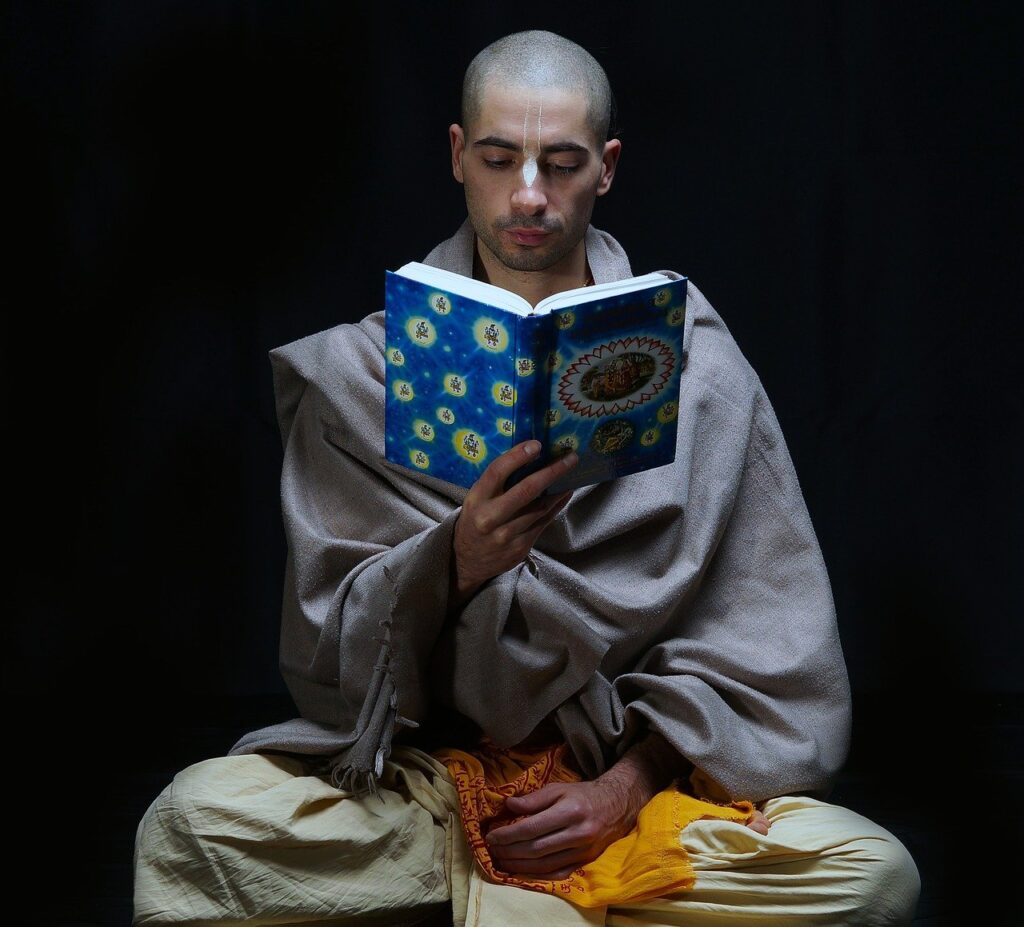
Lord Krishna is not only the origin of Sanatan Dharma but also its protector. We have addressed previously how He had imparted this Supreme science unto His devotees at different times in the past. There is another instance cited in the Puranas where Supreme Lord Krishna had incarnated as the ‘Matsya avatar’ to recover the knowledge of the Vedas that had been stolen by the demon Hayagriva. Hayagriva had stolen this supreme science from Brahma and thereafter hid in the ocean. The Supreme Lord then incarnated as a fish (Matsya) and delivered this Vedic knowledge after slaying the demon.
Sanatan Dharma – the eternal nature of the living
The eternal characteristics or nature (svabhava) of an entity (Vastu) is its Sanatan Dharma. When an entity comes into existence, it is created along with an original fundamental nature. Later, due to circumstances, when this entity comes in contact with other entities, it might develop a change in its nature. Over time, this changed or acquired nature (naimittika dharma) becomes firmly established and accompanies the entity just like its original eternal nature (Sanatan Dharma). But this acquired nature should not be mistaken as the original nature of the entity. These changed characteristics of the concerned entity (vastu) are called ‘nisarga’.
For example, water is an entity, and liquidity is its eternal nature (Sanatan Dharma). But when this same water is frozen into solid ice, then its liquidity is no more apparent. Instead, the solidity of ice becomes its acquired characteristics (naimittika dharma). But the ‘nisarga’ or acquired nature of an entity is never permanent. It arises due to a temporary circumstance and when the circumstance changes, the entity regains its original nature. The original nature or the Sanatan Dharma of an entity is eternal. Even when a modified nature (naimittika dharma) is manifested, the original nature prevails, although it may be dormant. In the course of time when the conditions are favorable, the original nature manifests itself openly once more. In our example, the solid ice changes into liquid water as soon as the freezing conditions are eliminated.

Sanatan Dharma, the eternal and intrinsic nature of any living entity (atman), including Man, is to perform seva (service). Sanatan dharma, being transcendental, refers to the universal and axiomatic laws that are beyond our shifting belief systems. If we deeply study the world around us, we would not find anyone who is not serving someone else. The father serves the son, the son serves his father, the wife serves her husband, the doctor serves his patients, the king serves his subjects, and so on. If someone has no one to serve, then he/she keeps a pet in his/her house and serves him. Thus, all of us are bound to serve, because by nature, the soul is a servant, and service is a natural characteristic (Sanatan Dharma) of the soul.
The Vedic scriptures, that form the very basis of the tenets of Sanatan Dharma, conclude that Man achieves the perfection of his existence only when he dovetails his eternal nature in serving the Supreme Lord. Instead, if he chooses to serve his own senses or his false ego, then he encircles himself in a material quagmire that only makes him suffer in multiple ways.
Jivera svarupa haya Krishera Nityadasa
Krishnera tathastha shakti bhedabeda prakasha
(Chaitanya Charitamrita)
–
The original nature of a living entity is to be an eternal servant of Lord Krishna. The living entity is the marginal potency of the Supreme Lord Krishna and is simultaneously one and different from the Lord.
The service attitude that a soul possesses towards Supersoul, is not based on any obligation, but is instead built on a foundation of a loving relationship. The whole purpose of our existence is to render loving devotional service unto the Supreme Lord, recognizing Him to be our ever well-wisher and our eternal object of love. Out of 8.4 million species of life, a human being is the most conscious and is perfectly equipped to attain complete spiritual realization. If we examine the life and history of people living in various parts of the world, we shall come to realize that faith in God is universal and a natural characteristic of people in general. Living entities, including man, are spirit souls that are part and parcel of the Supreme Lord. The soul can neither be destroyed by any weapon, nor be damaged by water, fire or wind. The soul or the spirit, neither takes birth, nor does he ever suffer death. Instead, the soul goes through a process of transmigration, from one body to the next, in a quest of attaining perfection. The soul finally attains a stage of perfection when it is able to rekindle its lost relationship with the Supreme.

Contrary to popular beliefs, Yoga is not merely a set of physical exercises. Instead it is a gradual process of uniting the soul with the Supersoul, thereby perfecting the existence of a living being. Sri Krishna states in Bhagavad Gita that the highest of all the yogis is one, who with great faith always abides by the Supreme Lord and constantly thinks of Him within Himself, rendering transcendental loving service unto Him. Sri Krishna proclaims, that such a yogi (devotee) , is the most intimately united with Him in yoga and the highest of all.
Yoginaam api sarvesam mad gatenantar atmana
Sradhavan bhajate yo mam, sa me yuktatamo matah
(BG 6.47)Sri Krishna thus confirms in Bhagavad Gita that rendering transcendental loving service unto Him, is the highest truth and the ultimate perfection of one’s life.
Is Sanatan Dharma Sectarian?
The Sun may be called by different names but remains one no matter how widely we travel. Similarly, God is one though He might be called upon differently by different people. Likewise, the laws of physics or mathematics are universal, although students might study them in various universities. Similarly, though one might accept a particular authorized religious tradition, the ultimate goal to render devotional service unto the Supreme prevails. Those belonging to some sectarian faith will wrongly consider that Sanatan dharma is also sectarian, but if we go deeper into the matter and consider it in the light of modern science, we shall discover that Sanatan dharma is the affair of all the people of the world, nay, of all the living entities of the universe.
Misdirected service – Root cause of all evil
A spirit soul is always in love. Constitutionally, it is meant to love and be loved. This propensity of the soul to render loving devotional service is completely satisfied when it is directed towards God, the Supreme Spirit. Katha Upanishad states that the Supreme Lord is the Supreme eternal amongst all the other eternal beings. He is the fundamental conscious being among all the other conscious beings (Nityo nityanam cetanas cetananam). A spirit soul is a part and parcel of the Supreme Lord and is bound to Him by love.
However, when a living entity grows forgetful of this eternal loving relationship with the supreme, he gets overwhelmed with this temporary world of matter. As the soul always seeks love (devotional service), therefore when it loses touch with the divine, it becomes attached to inferior material objects. However, a loving relationship with the Supreme Lord that bestows ecstatic spiritual bliss can never be substituted by love and attachment for dull matter, which only renders flickering sensual pleasures. As self-satisfaction grows far-fetched, one begins indulging in serving his senses more and more. The greater the extent of one’s material entanglement, the further is one’s alienation from his eternal spiritual reality. The absence of divine love frustrates the soul because the soul only hankers for eternal spiritual bliss.
Just like the Supreme Lord, a living entity is also eternal (sat), cognizant (cid), and full of bliss (ananda). The Supreme Lord is like the sun while the living entities are like sunlight. Living entities are like sparks emanating from the blazing fire of the Supreme Lord. So though the living entities are qualitatively the same with the Lord, the difference lies in their quantity. When this living entity disregards God and forgets Him, he at once comes under the influence of material nature. At that time, he develops several temporary characteristics (Naimittika Dharma) that eclipse his eternal inclination to serve the Supreme Lord. Consequently, this temporary nature of the living being overshadows his eternal blissful nature, and may even manifest itself in the form of greed, anger, lust, envy, depression, anxiety, etc. However, it must be remembered that the original eternal nature (Sanatan Dharma) of the living entity is never lost. It unveils itself at the appropriate time, as soon as the living being rejects his degraded material consciousness. Just as vapour transforms itself back into its original form of water, as soon as the boiling conditions are eliminated, similarly the living entity regains his original blissful nature as soon as he awakens his eternal loving relationship with the Supreme Lord.
Practicing Sanatan Dharma in this day and age:
Bhagavad Gita teaches how this material world is exceedingly difficult for a living entity to overcome (mama maya duratyaya). But this incredibly challenging objective is easily accomplished by those who surrender unto Sri Krishna, the Supreme Lord and seek His divine shelter (mam eva ye prapadyante mayam etam taranti te). Such a person can control his mind, transcend material nature, and even his material desires. Such a perfect devotee rejoices in boundless spiritual bliss and is not shaken even amidst the greatest of difficulties. This certainly is actual independence – freedom from all miseries (anxiety, depression, fear, etc) arising out of material contact. Such a person identifies everything as part and parcel of the Supreme and tries to engage them in the service of the Supreme Lord. Everything else takes a backseat, while serving the Supreme becomes his primary objective.

Now, one might question as to how one can take shelter or serve the Supreme Lord practically and revive this state of spiritual consciousness. Does it only demand an adjustment of intellectual perception or does it also require certain spiritual practices? The ancient Vedic scriptures proclaim that chanting the holy Name of Supreme Lord Hari is the only practical and effective means of cultivating spiritual realization (devotion) in this present day and age. Nothing else is as powerful.
Harer nama harer nama harer namaiva kevalam
kalau nasty-eva nasty-eva nasty-eva gatir anyathaa
(Brhad Naradiya Purana)
–
In this age of Kali the only means of deliverance is chanting of the holy name of Lord Hari. There is no other way. There is no other way. There is no other way.
Love for the Supreme Lord is not something that can be achieved artificially from an external source. It is eternally existing within the hearts of all living entities. When the heart is purified by the process of regular hearing and chanting the holy names, glories of the Supreme Lord, this eternal love awakens and reveals itself once more.
nitya-siddha Krishna-prema ‘sadhya’ kabhu naya,
sravanadi suddha chitte karaye udaya
(Chaitanya Charitamrta, Madhya, 22.107)
–
Pure love for Krishna is eternally established in the hearts of the living entities. It is not something to be gained from an external source. When one’s heart is purified by the regular hearing and chanting of Krishna’s holy name and glories, this love naturally awakens.